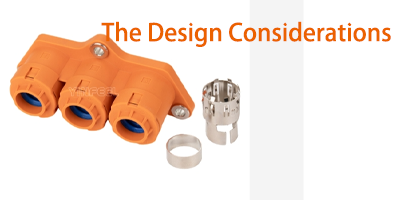In the complex ecosystem of modern electronics, through hole connectors serve as the vital conduits that ensure seamless electrical connectivity. Their design and manufacturing process are meticulously crafted to meet a diverse array of requirements, each decision underpinning their performance, reliability, and applicability across a spectrum of applications.
I. Design Considerations
A. Electrical Performance Optimization
The primary design consideration is the optimization of electrical performance. Connectors such as the IF-GK120-3-50 High Voltage Electric Wire Pass Connector and its counterparts are engineered with precision. The choice of conductive materials is crucial; high-quality metals with low resistivity are selected to minimize power losses during current transmission. For instance, in high-voltage applications, the connectors must maintain stable electrical conductivity even under extreme voltage gradients. The contact design is refined to ensure a reliable and continuous electrical path. The shape and size of the contact pins are carefully calibrated to reduce contact resistance and prevent signal degradation. In high-frequency circuits, special attention is given to minimizing parasitic capacitance and inductance, which could otherwise disrupt signal integrity.
B. Mechanical Robustness and Durability
Mechanical strength is another cornerstone of design. These connectors need to withstand mechanical stresses, including vibrations, impacts, and thermal expansion/contraction cycles. In automotive applications like the IF-GK87-2-35 IPT Connector, the connector must endure the rigors of the vehicle's dynamic environment. The housing is constructed from durable materials, often with reinforced structures. The retention force of the pins within the housing is engineered to prevent loosening or dislodgment. Additionally, the connector's design accounts for cable strain relief. The interface between the cable and the connector is fortified to avoid cable damage due to repeated flexing or pulling, safeguarding the long-term integrity of the connection.
C. Environmental Adaptability
Through hole connectors must be adaptable to a wide range of environmental conditions. In outdoor or industrial settings, they may be exposed to temperature variations, humidity, dust, and corrosive substances. The materials used for the connector's exterior are selected for their resistance to environmental degradation. Sealing mechanisms are incorporated to prevent moisture ingress and contamination. For example, in energy storage systems where the IF-GK56-1-50 High current energy storage connector is employed, the connector's design ensures reliable operation in potentially harsh environments, maintaining its electrical and mechanical properties over extended periods.
II. Manufacturing Process
A. Component Fabrication
The manufacturing process commences with the fabrication of individual components. The pins are precision-machined to exacting tolerances, ensuring consistent dimensions and surface finishes. The quality of the machining process directly impacts the connector's electrical contact performance. The housing is molded or fabricated through techniques such as injection molding or die-casting, depending on the material and design requirements. Quality control at this stage is stringent, with inspections for defects like cracks, porosity, or dimensional inaccuracies. Any substandard components are promptly rejected to prevent their incorporation into the final product.
B. Assembly and Integration
Once the components are fabricated, the assembly process begins. The pins are carefully inserted into the housing, and in some cases, additional securing mechanisms such as clips or adhesives may be used to ensure proper alignment and retention. Automated assembly techniques are often employed to enhance efficiency and precision. However, human inspection is still essential to detect any misalignments or assembly errors that automated systems may miss. During assembly, the cable is also integrated into the connector. The cable is stripped to the appropriate length, and the conductors are securely attached to the pins. Specialized tools and techniques are used to ensure a reliable and electrically sound connection.
C. Quality Assurance and Testing
Quality assurance permeates every stage of the manufacturing process. After assembly, connectors undergo a battery of tests. Electrical tests include measuring contact resistance, insulation resistance, and withstanding voltage. Mechanical tests assess the connector's ability to withstand tensile forces, vibrations, and shock. Environmental tests simulate exposure to temperature extremes, humidity, and corrosive agents. Only connectors that pass all these tests are deemed fit for release. This comprehensive quality assurance regime ensures that the through hole connectors meet the highest standards of performance and reliability, ready to fulfill their crucial role in powering and connecting the diverse array of electronic devices in our modern world.
In conclusion, the design and manufacturing process of through hole connectors is a symphony of precision engineering, material science, and quality control. It is this meticulous approach that enables these connectors to serve as the unwavering backbone of electrical connectivity in countless applications.
